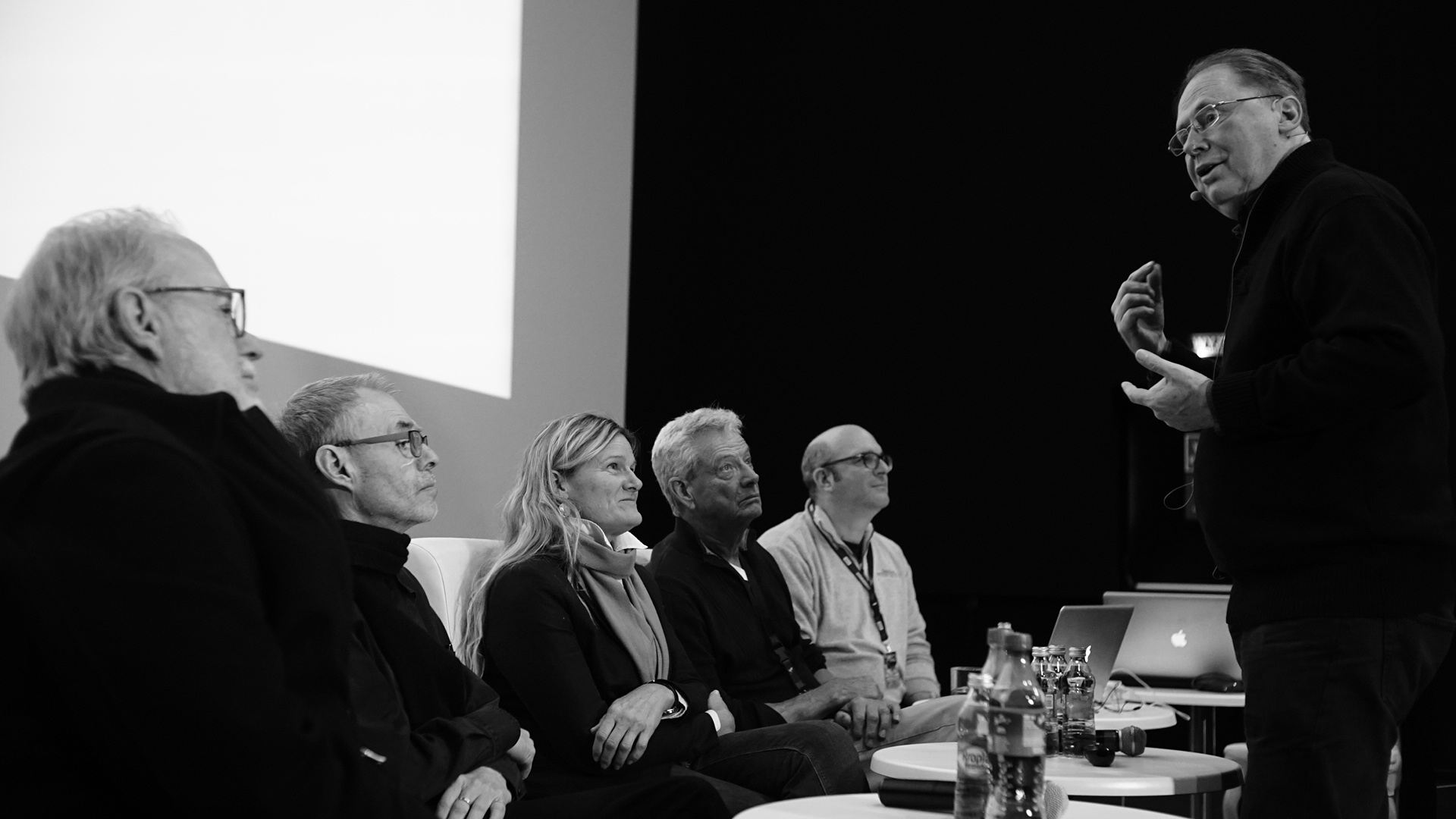
AC, ASC Salute Hall at Camerimage
All of the panelists shared a reverence not just for Hall’s intuition as a cinematographer, but also his quick wit, irascible nature, and sensitivity to the world and others around him.

A standing-room-only crowd gathered on the penultimate evening of the Camerimage International Film Festival in Poland to watch an American Cinematographer/ASC tribute to the late Conrad L. Hall, ASC.
The discussion was led by AC European correspondent Benjamin B and included ASC members John Toll, Ellen Kuras and John Seale; gaffer James Plannette; and AC publisher/editor-in-chief Stephen Pizzello. The event also included videotaped messages from Haskell Wexler, ASC, and ASC associate member Garrett Brown.
Clips from Hall’s body of work included Cool Hand Luke, In Cold Blood, Butch Cassidy and the Sundance Kid, Fat City, Marathon Man, Jennifer 8, Searching for Bobby Fischer, American Beauty and Road to Perdition. (Hall won Academy Awards for Butch Cassidy and the Sundance Kid, American Beauty and Road to Perdition.)
In Hall’s work use of expressionistic lighting, the panelists cited the scene in In Cold Blood in which the doomed killer, Perry (Robert Blake), makes an 11th-hour confession to a prison chaplain as the rain pelting the window of his cell is projected onto his face. “Conrad used light to create meaning and influence our understanding of the characters,” said Kuras.

Toll, who operated for Hall on Tequila Sunrise and a number of subsequent commercials, pointed out that Hall was able to smoothly bridge the gap from hard black-and-white to soft color cinematography by maintaining control of contrast in the image. This particular mastery of the medium is evident in Fat City, where, according to Plannette, the image was overexposed by 3 stops in the camera, pulled 1 stop in developing, and then printed down 2 stops. This allowed Hall to shoot in a more improvisational fashion, with available light and practicals, while working at ASA 100. Toll recalled that Hall was nearly fired from that job — it was only at director John Huston’s insistence that the cinematographer escaped the producer’s axe. “That was Conrad: always on the edge, doing stuff no one else would do, and getting away with it because it was great,” said Toll.
Brown operated Steadicam for Hall on Marathon Man and recalled the cinematographer’s uncanny command of light: “He had wonderful karma for light. He could almost wave his arms and the sun would come out.”
The dormitory chase in Jennifer 8 was cited as an example of maximally effective lighting with a minimal amount of tools — in this case, a single flashlight. The panelists also described Hall’s final films, American Beauty and Road to Perdition, as postmodern works.
All of the panelists shared a reverence not just for Hall’s intuition as a cinematographer, but also his quick wit, irascible nature, and sensitivity to the world and others around him. Pizzello recalled that when he interviewed Hall about Searching for Bobby Fischer, the cinematographer said, “Filmmaking should be childish because it’s about discovering. We should approach our work in the same way that a child discovers new aspects of the world.”
Benjamin B will share more details from this event in an upcoming post in The Film Book.






